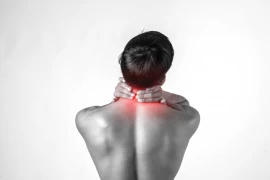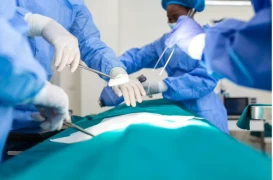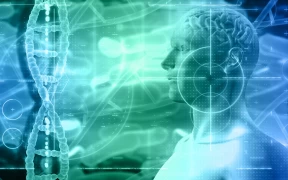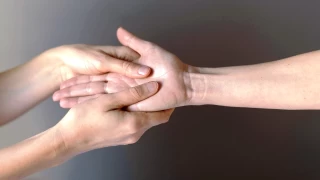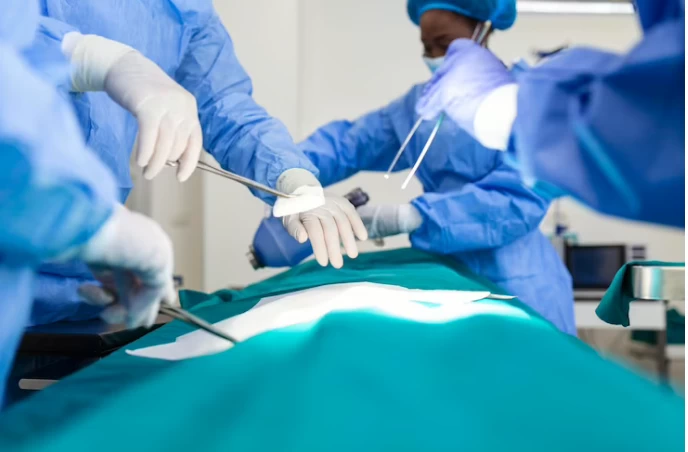
Surgical Intervention in Lumbar Disc Herniation
- Surgical Intervention in Lumbar Disc Herniation
- What Is Lumbar Disc Herniation?
- What Are the Symptoms of Lumbar Disc Herniation?
- What are the Treatment Methods of Lumbar Hernia?
- When Is Surgery Necessary in Lumbar Disc Herniation?
- Surgical Methods in Lumbar Disc Herniation
What Is Lumbar Disc Herniation?
The intervertebral discs, which are cushion-like structures between the vertebrae, play an important role in reducing friction, acting as shock absorbers, and maintaining the flexibility of the spine. Lumbar disc herniation occurs when the outer layer of the discs between the lumbar vertebrae weakens or tears, resulting in compression on the nerve roots.
What Are the Symptoms of Lumbar Disc Herniation?
After lumbar disc herniation, the following symptoms may occur due to compression on the nerve tissues caused by the herniation:
- Back pain: The most common symptom of lumbar disc herniation is back pain. The pain typically starts in the lower back and can radiate to the buttocks, thighs, or feet. The pain can be felt on one side or both sides of the legs.
- Leg pain and discomfort: Many people with lumbar disc herniation experience pain or discomfort that radiates from the lower back to the leg. This pain is caused by the compression of the nerve roots affected by the herniation.
- Numbness and tingling: Lumbar disc herniation can cause numbness, tingling, or a sensation of loss of feeling in the legs by exerting pressure on the nerve roots.
- Weakness: After lumbar disc herniation, pressure on the nerve roots can lead to weakness or loss of strength in the muscles. This condition can increase the risk of walking difficulties, limping, or falling.
- Reflex changes: Lumbar disc herniation can cause changes in reflexes by affecting the nerve roots. For example, knee or ankle reflexes may become weaker or diminished.
- Problems with bladder or bowel control: In rare cases, lumbar disc herniation can cause problems with bladder or bowel control. This can manifest as urinary incontinence, difficulty urinating, or bowel movement issues. This condition may require urgent medical intervention.
- Decreased sexual function: In some cases, lumbar disc herniation can lead to a decrease in sexual functions, such as erectile dysfunction.
The symptoms of lumbar disc herniation can vary from person to person. The severity and extent of the symptoms can vary depending on the location of the herniation, the degree of compression on the nerve roots, and the individual's physical condition. The symptoms typically worsen with activity and improve with rest.
If you are experiencing symptoms of lumbar disc herniation, it is important to consult a healthcare professional.
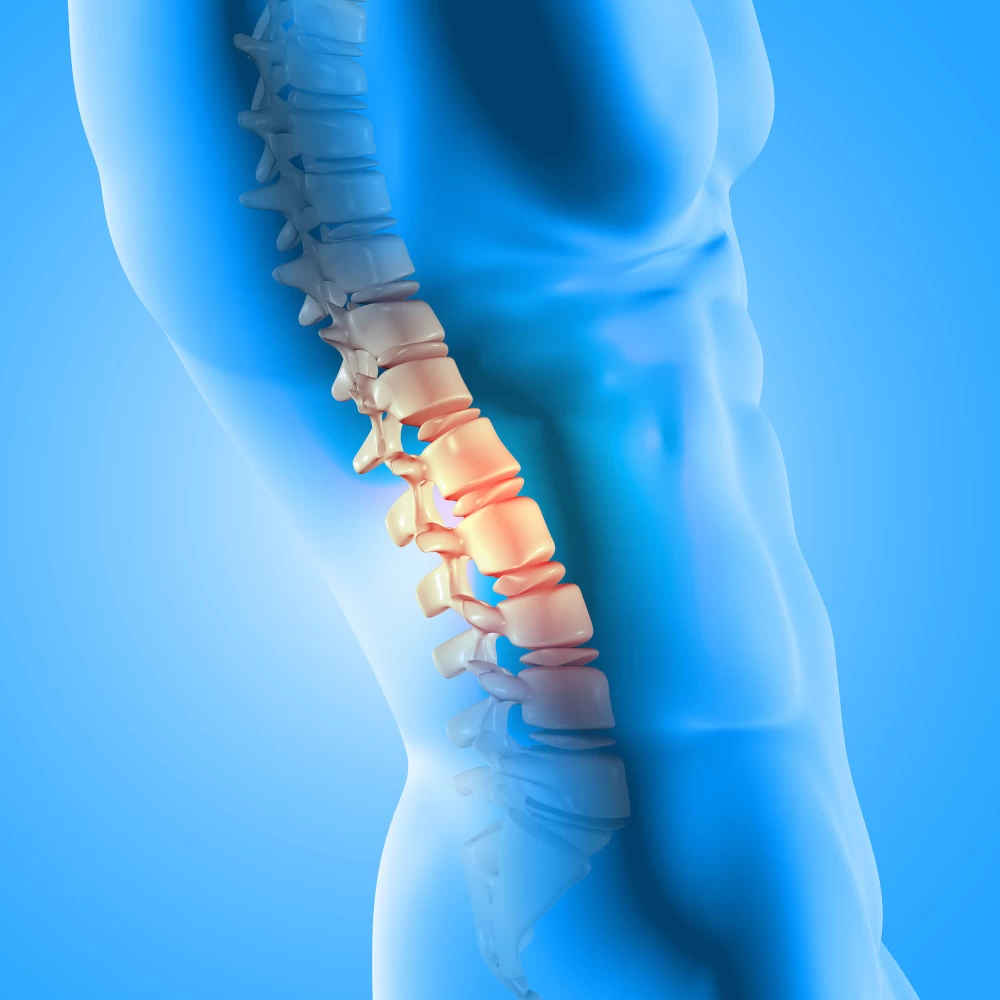
What are the Treatment Methods of Lumbar Hernia?
There are many treatment methods for lumbar hernia. The treatment options for lumbar disc herniation can vary depending on the severity of the symptoms, the duration of the symptoms, the patient's age, and overall health. Here are common treatment methods used in the treatment of lumbar disc herniation:
- Conservative treatment: In many patients with lumbar disc herniation, conservative treatment methods can be tried to control the symptoms and promote healing. These treatment options may include:
- Rest: Limiting activities and resting can help facilitate the healing of the disc.
- Pain medication: Pain relievers or anti-inflammatory medications recommended by your doctor can alleviate pain and reduce inflammation.
- Physical therapy: Physical therapists can teach specific exercises, stretching techniques, and posture correction to patients with lumbar disc herniation.
- Cold or hot application: Cold or hot compresses can be used to reduce inflammation and pain.
- Injection therapy: Local injection treatments can be used to alleviate lumbar disc herniation symptoms in specific cases. Injections can be applied into the joint space, guided into the spinal canal, or into the disc. These injections can help reduce inflammation and alleviate pain.
- Surgical intervention: Surgical options for lumbar disc herniation may be considered when symptoms are severe, there is functional impairment due to nerve compression, or conservative treatments have been ineffective. The aim of surgical intervention is to remove the disc material, reduce nerve compression, and alleviate symptoms. Surgical options may include procedures such as microdiscectomy, laminectomy, or discectomy. Surgical options and techniques can vary depending on the patient's condition, the severity of symptoms, and the evaluation by the doctor.
When Is Surgery Necessary in Lumbar Disc Herniation?
Surgery is not necessary for every patient with lumbar disc herniation. In most cases, symptoms can be managed with conservative treatment methods. However, surgery may be necessary in some cases of lumbar disc herniation. Here are some situations that may require surgery for lumbar disc herniation:
- Severe pain: If conservative treatment methods such as rest, medication, and physical therapy are unable to control severe pain that significantly affects the quality of life, surgery may be considered.
- Advanced nerve compression: Lumbar disc herniation can compress the nerve roots and adversely affect nerve functions. If nerve compression is advanced and neurological symptoms (muscle weakness, numbness, loss of movement, etc.) have developed, surgery may be necessary.
- Loss of bladder or bowel control: Lumbar disc herniation can affect bladder or bowel control by exerting pressure on the nerves in the lower back. If there are severe symptoms such as loss of bladder or bowel control, urgent surgical intervention may be required.
The decision for surgery depends on factors such as the severity of lumbar disc herniation symptoms, neurological condition, patient's lifestyle, and preferences. A neurosurgeon can evaluate and determine the most suitable option for the treatment of lumbar disc herniation and whether surgery is necessary.
Surgical Methods in Lumbar Disc Herniation
Surgical treatment for lumbar disc herniation may be considered when symptoms are severe, there is functional impairment due to nerve compression, or conservative treatments have been ineffective. The goal of surgical intervention is to remove the disc material, reduce nerve compression, and alleviate symptoms. Here are some commonly used surgical methods in lumbar disc herniation:
- Microdiscectomy: This is a commonly used method for surgically removing a lumbar disc herniation. Microdiscectomy involves the removal of the herniated (protruding) material from the disc using a microscopic surgical technique. It reduces pressure on the nerve roots, relieving pain and other symptoms.
- Endoscopic discectomy: Lumbar disc herniation surgery can be performed using endoscopic methods with a small incision. Recovery is faster due to less tissue dissection.
- Laminectomy: In this method, after removing the disc material that compresses the spinal cord and nerve roots, the bone tissue (lamina) at the back of the spinal canal is partially or completely removed to provide more space for the spinal cord and nerve roots. Laminectomy can also be used to treat conditions such as spinal stenosis.
- Discectomy: In some cases, complete removal of the affected disc in lumbar disc herniation may be necessary. Discectomy can be performed with various techniques, where the entire disc tissue is removed, and then the disc space can be filled or stabilized using different methods such as disc prosthesis placement or spinal fusion.
The choice of surgical methods can vary depending on the patient's condition, the severity of symptoms, the degree of nerve compression, and other factors. Prior to surgical intervention, the doctor will evaluate the patient and determine the most suitable surgical option. Since each surgical procedure has its own advantages, disadvantages, and recovery periods, it is important to determine the most appropriate surgical option based on the patient's specific condition."

